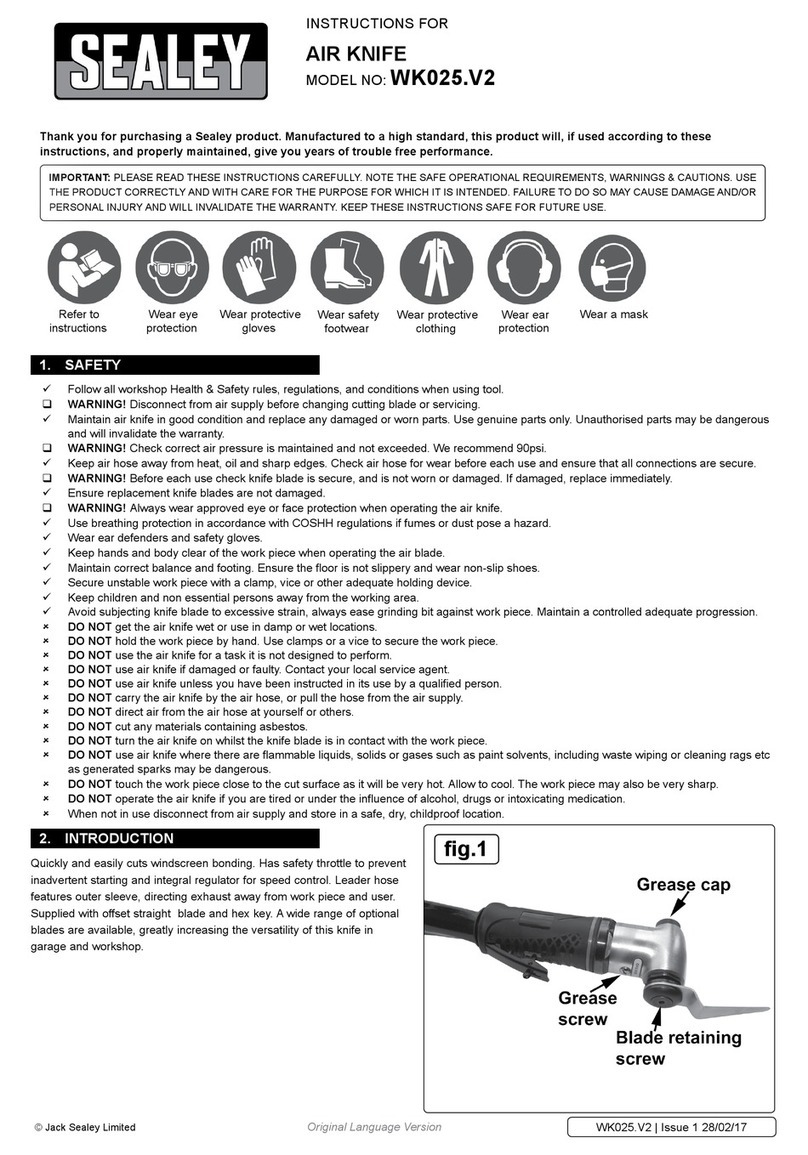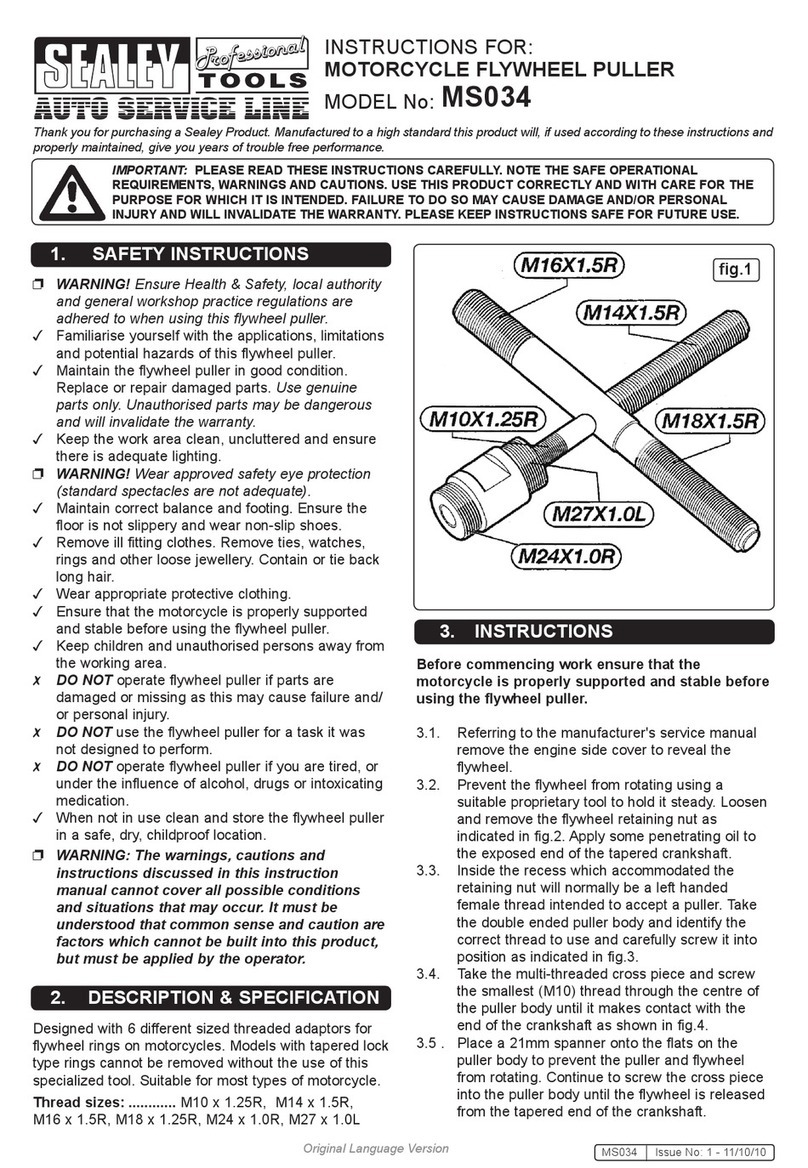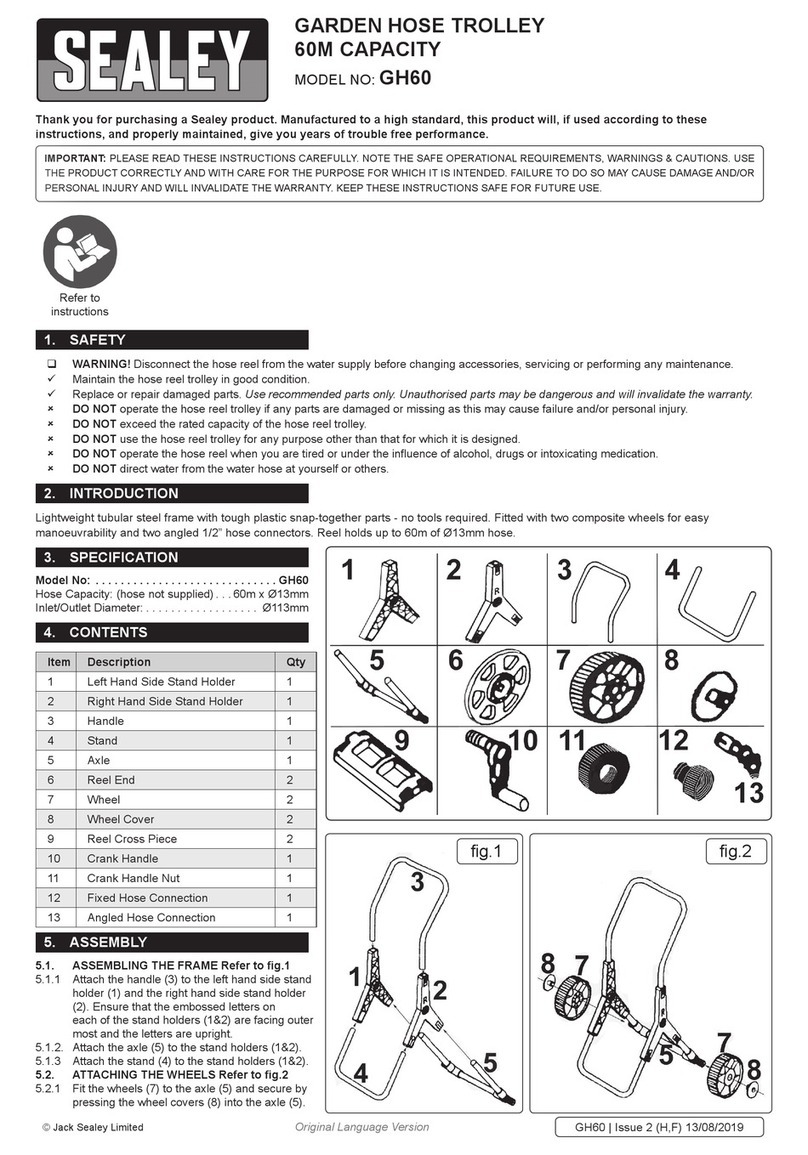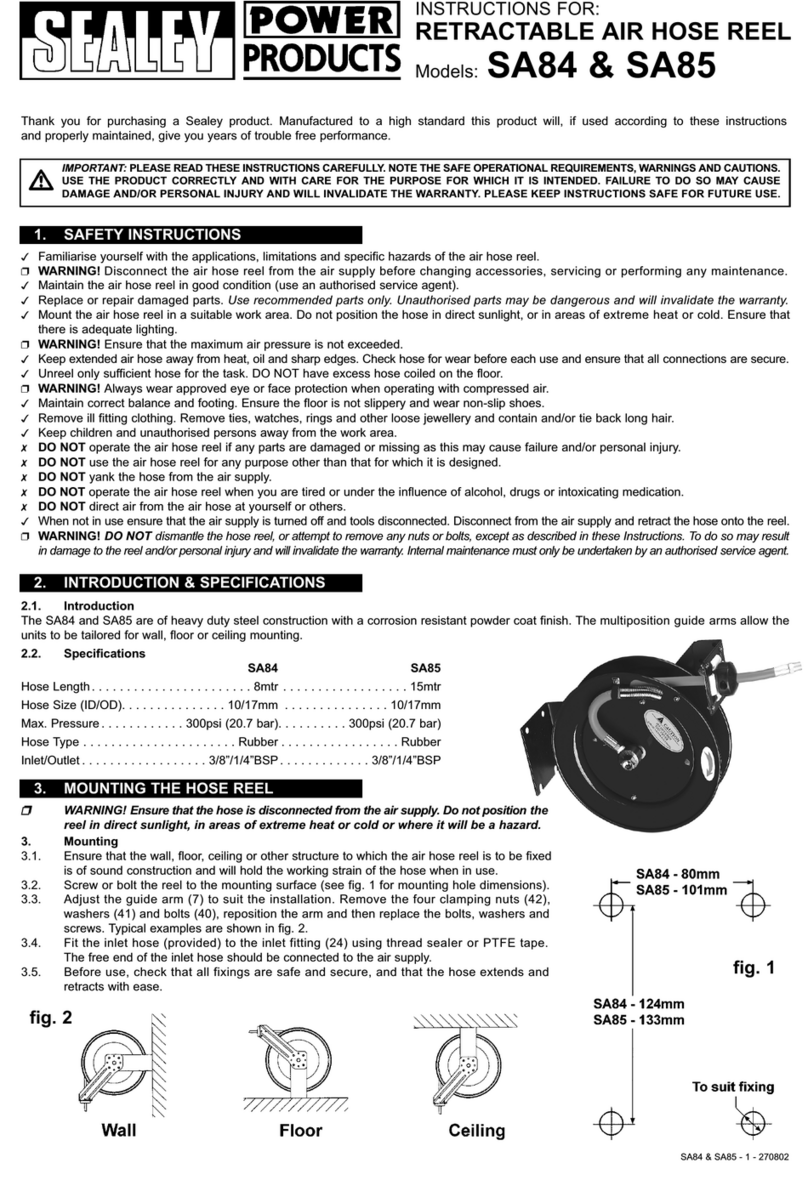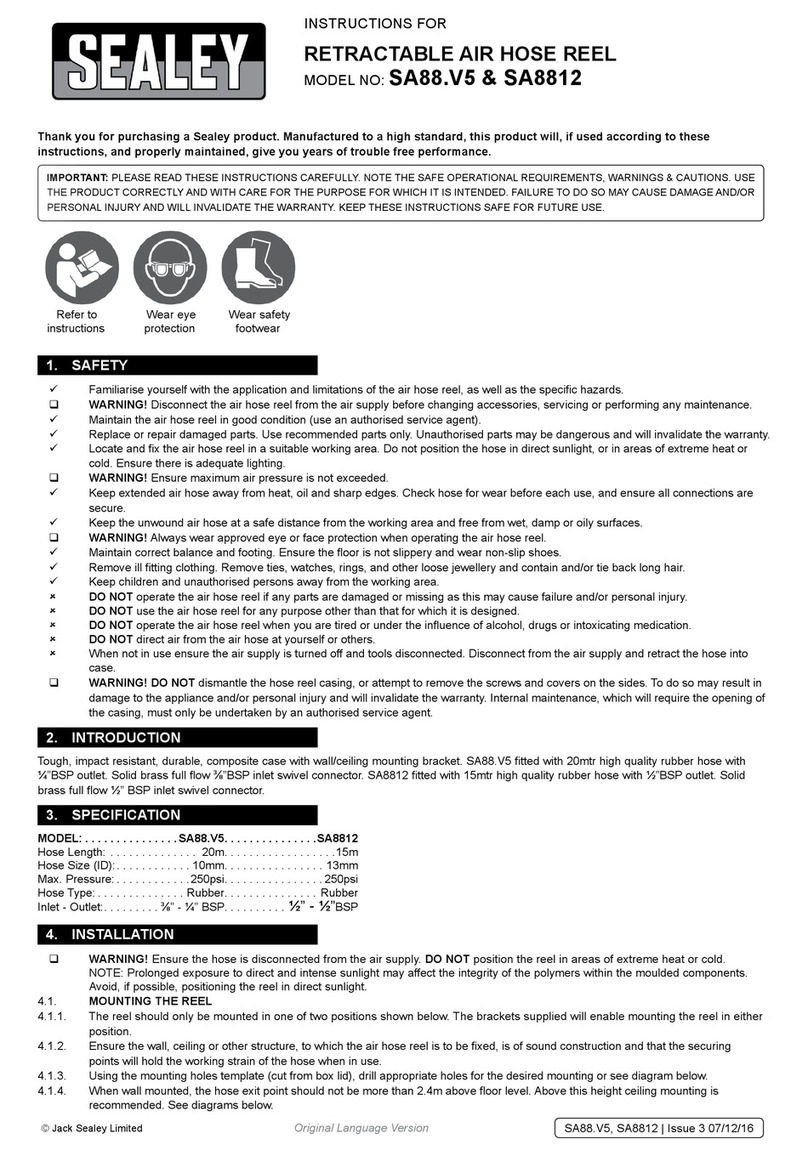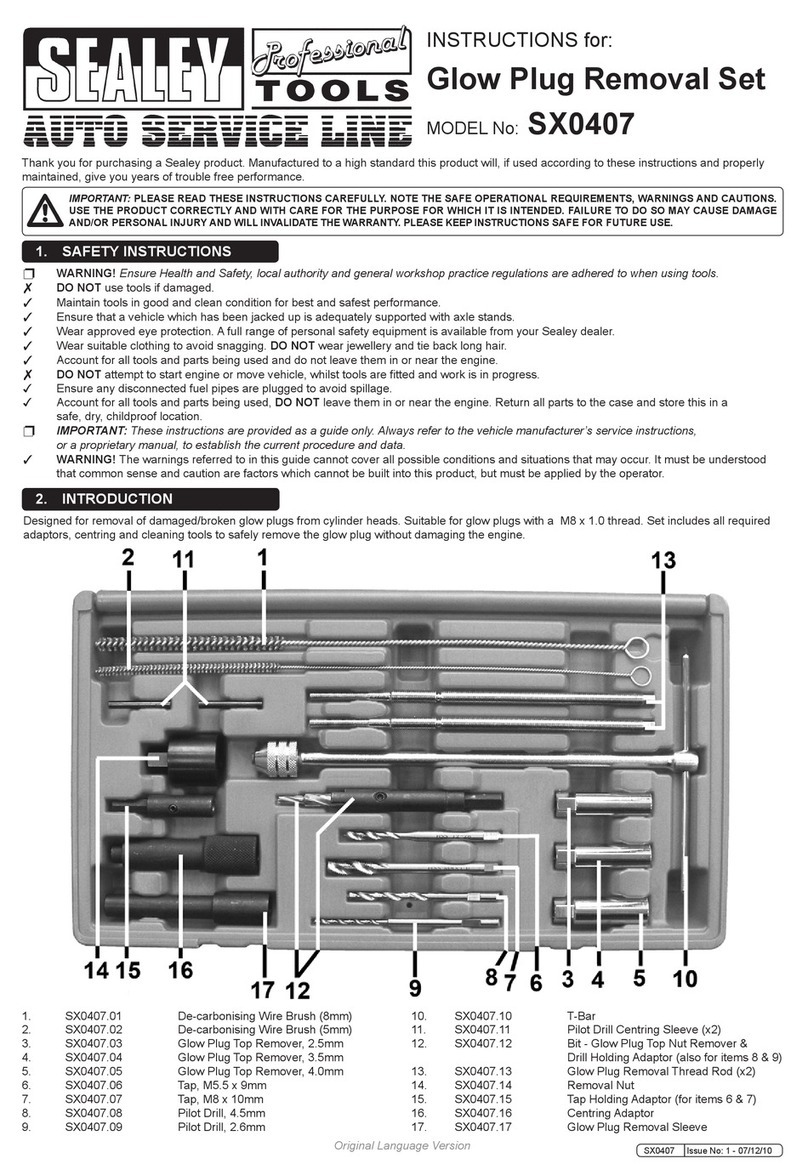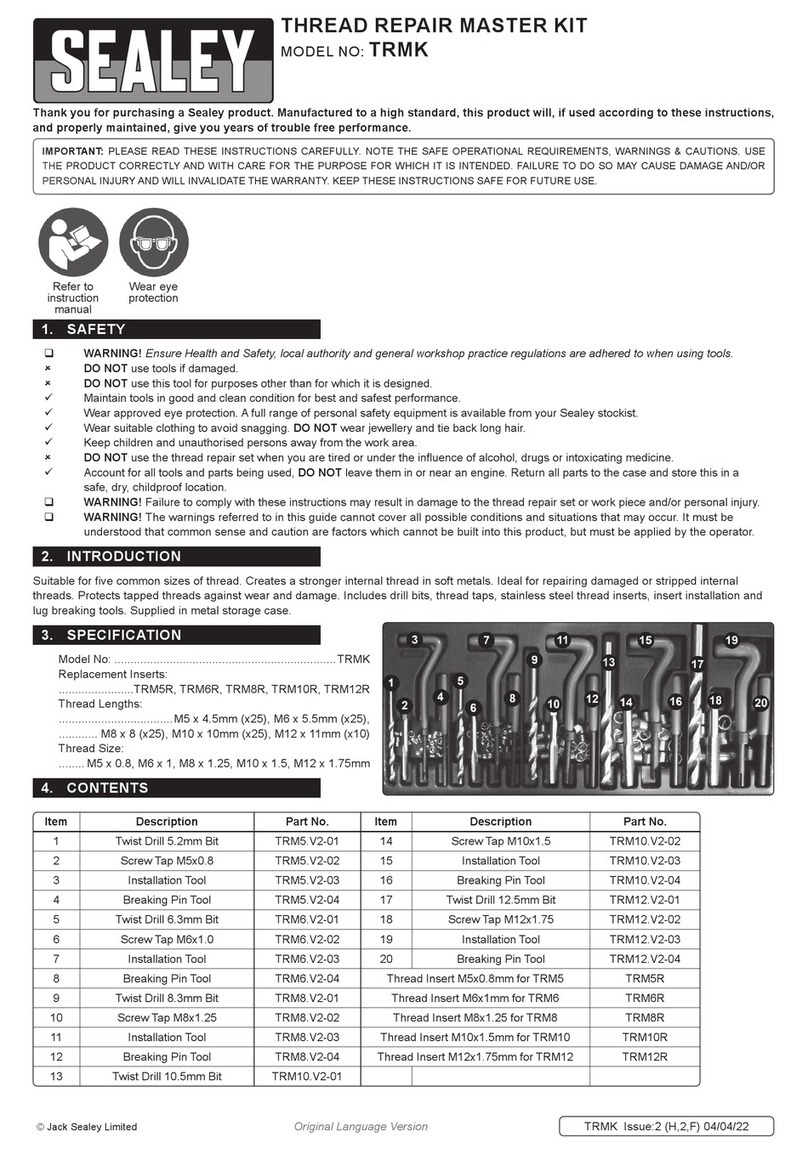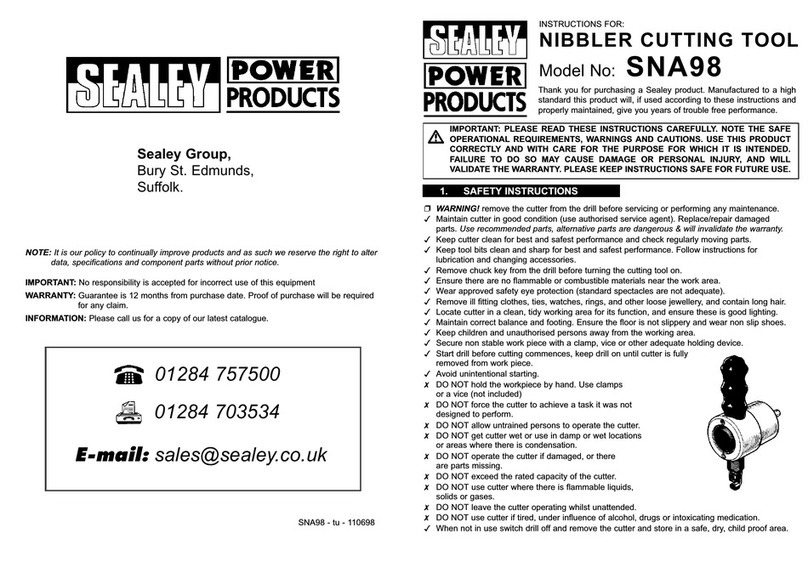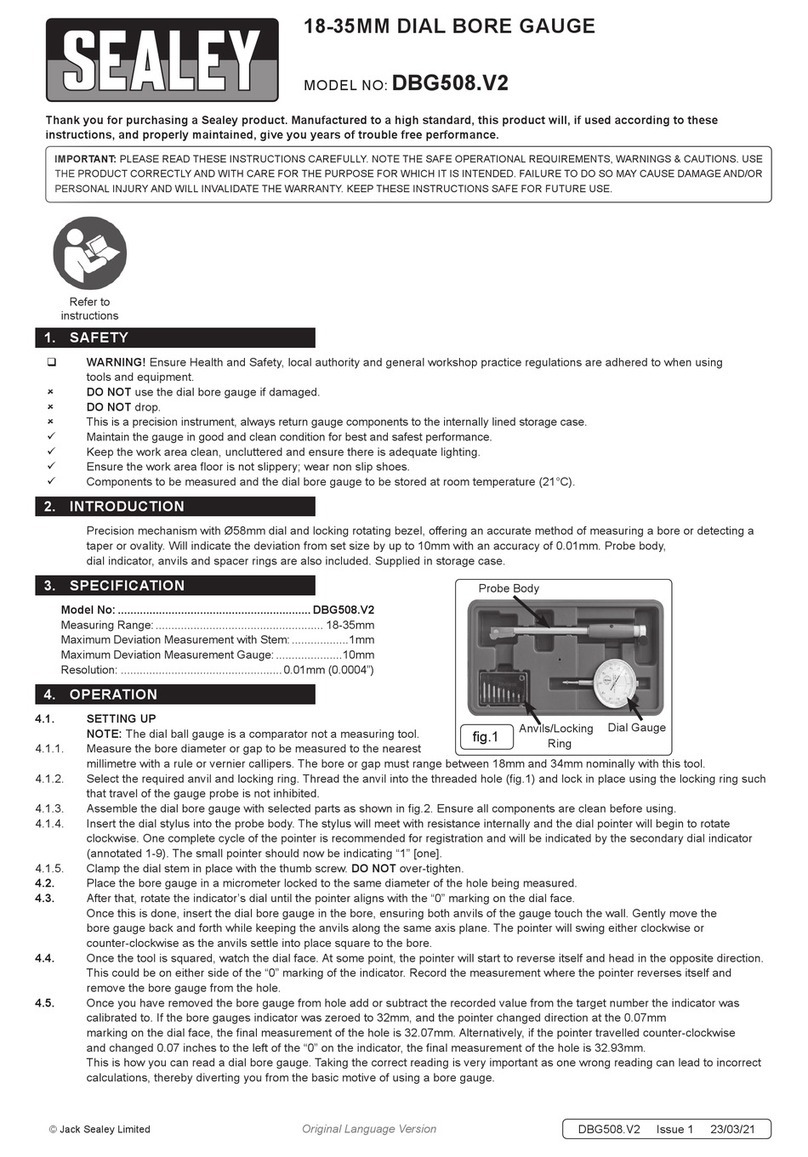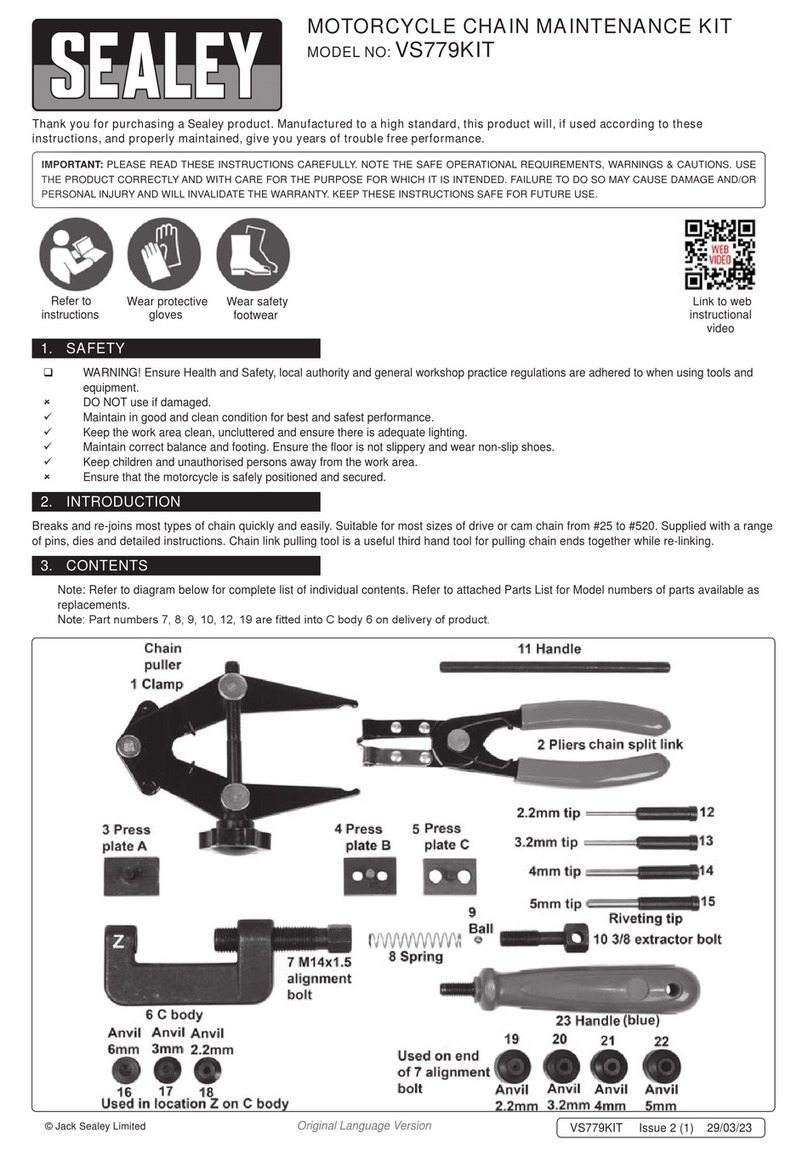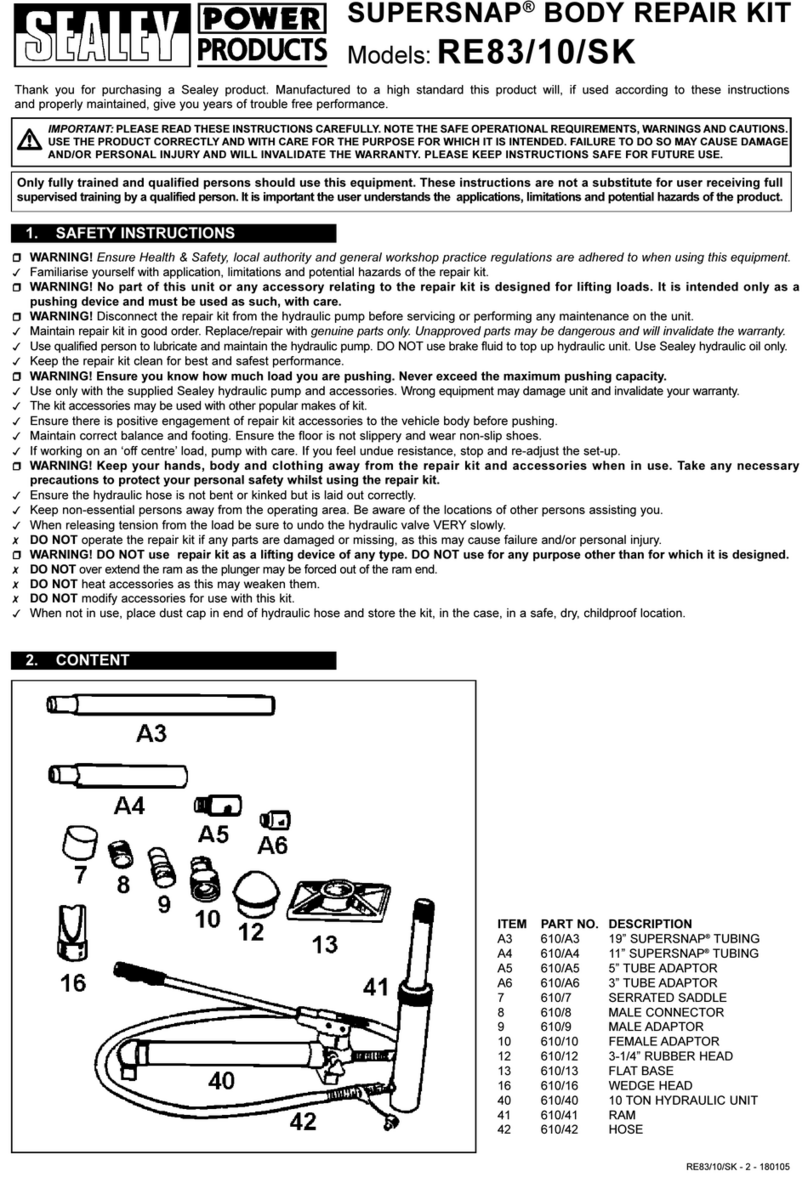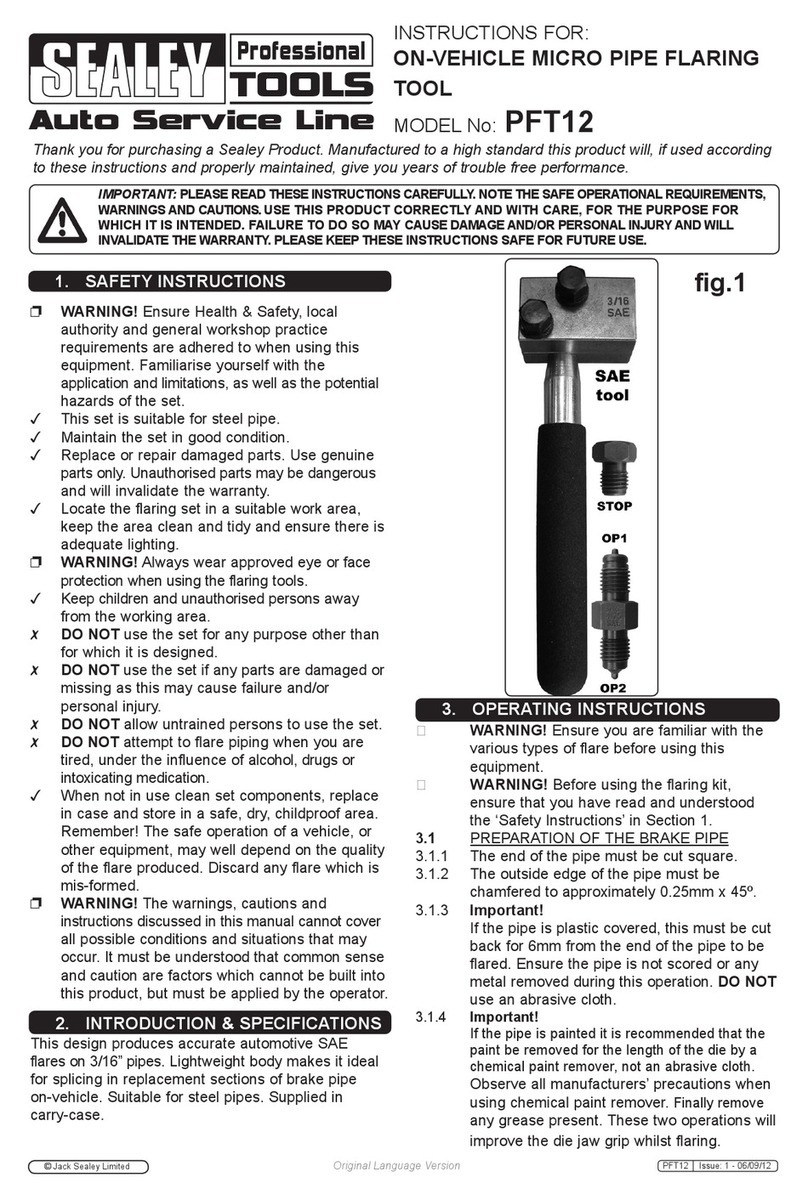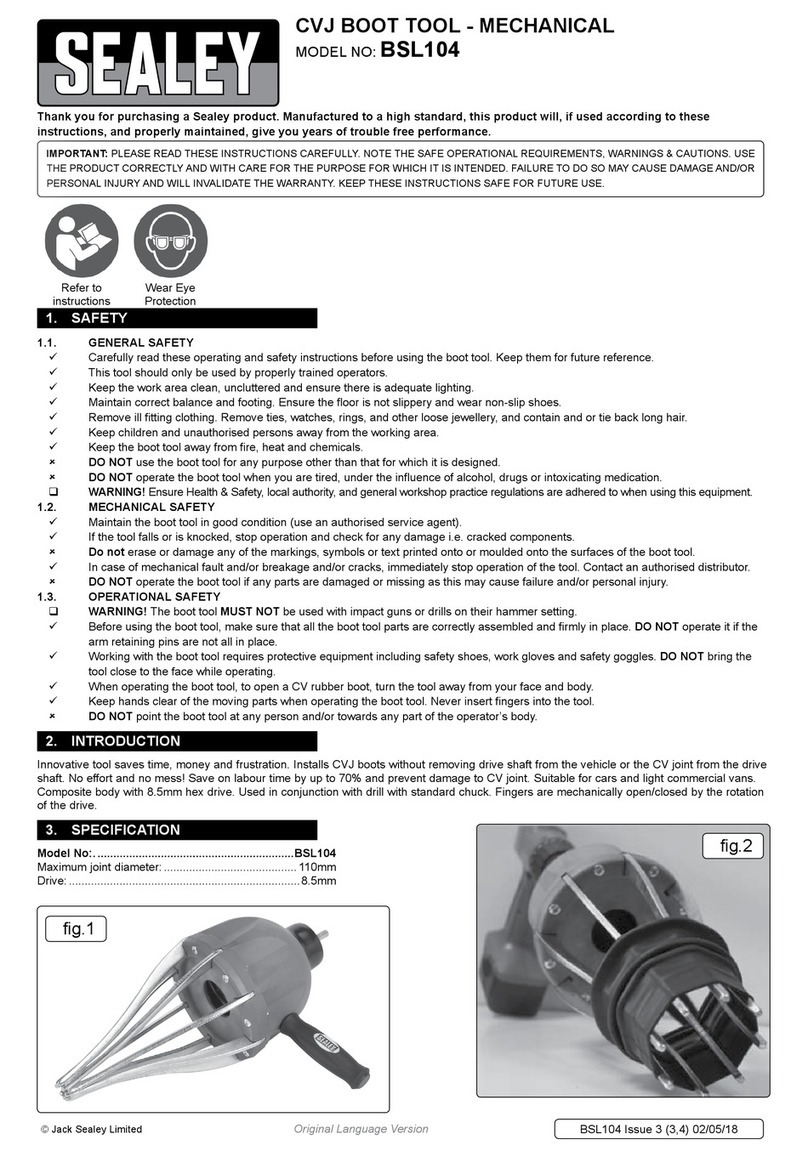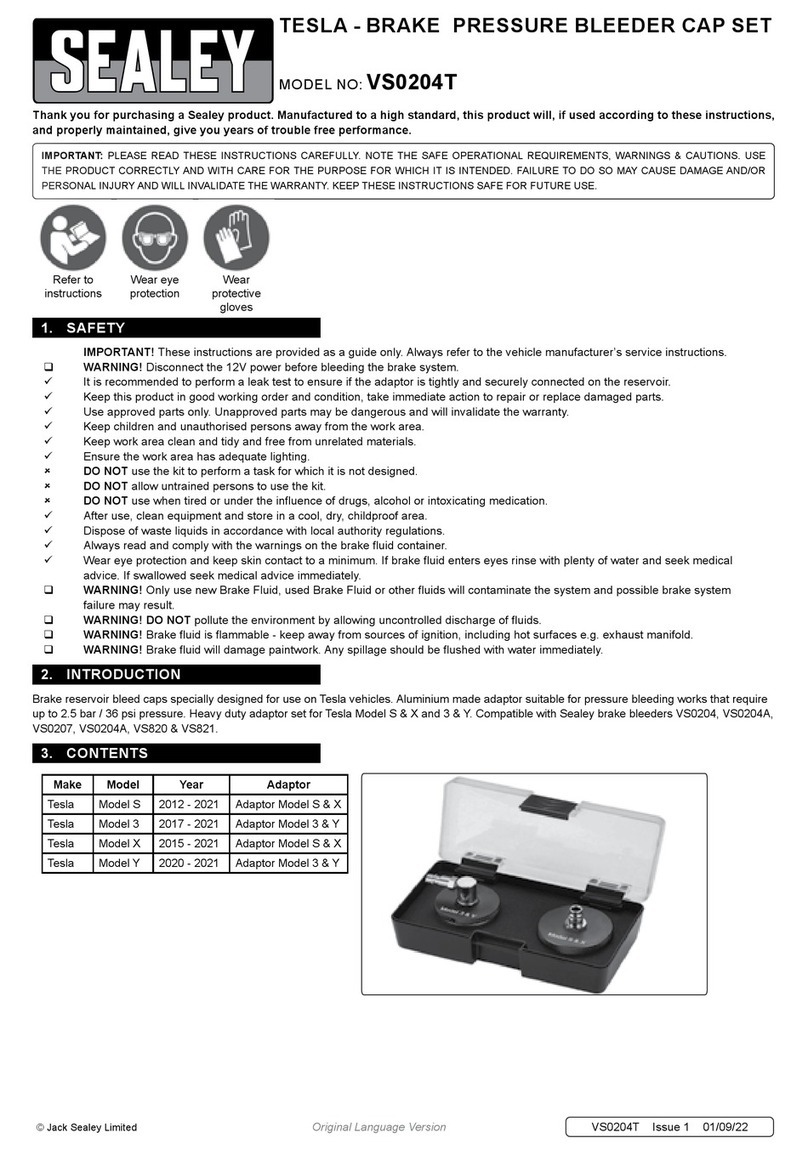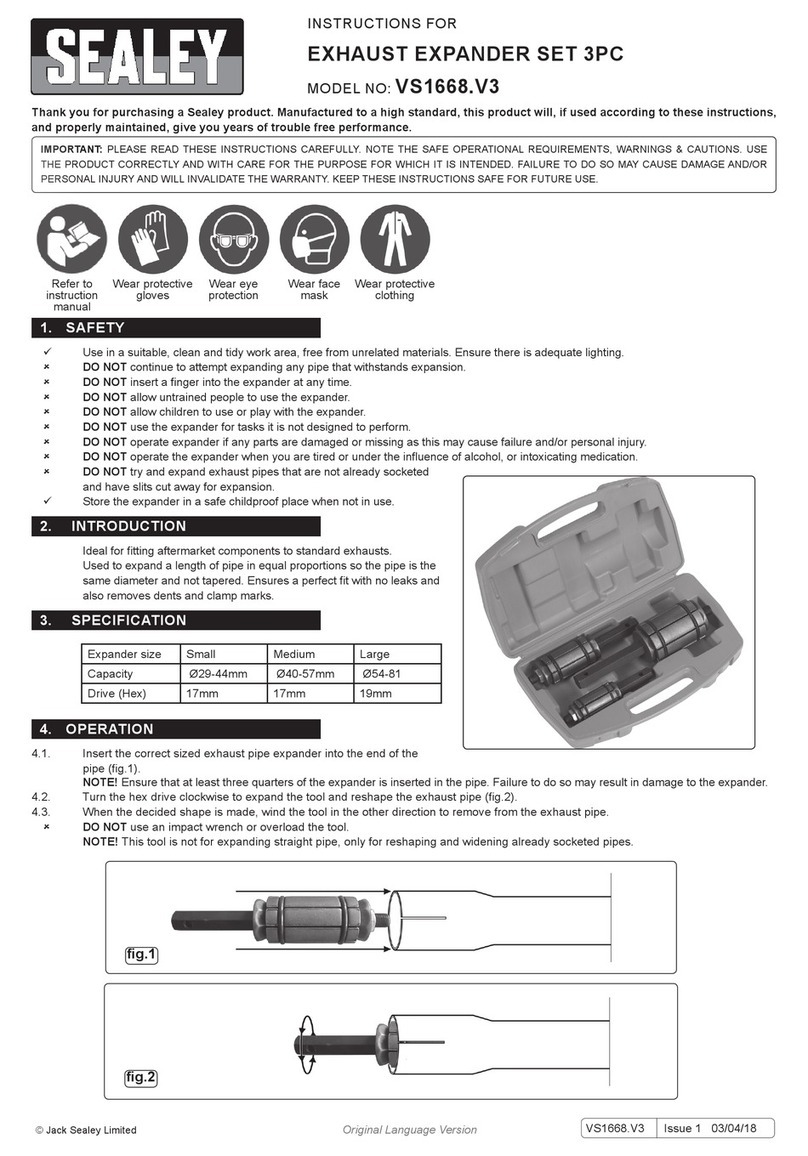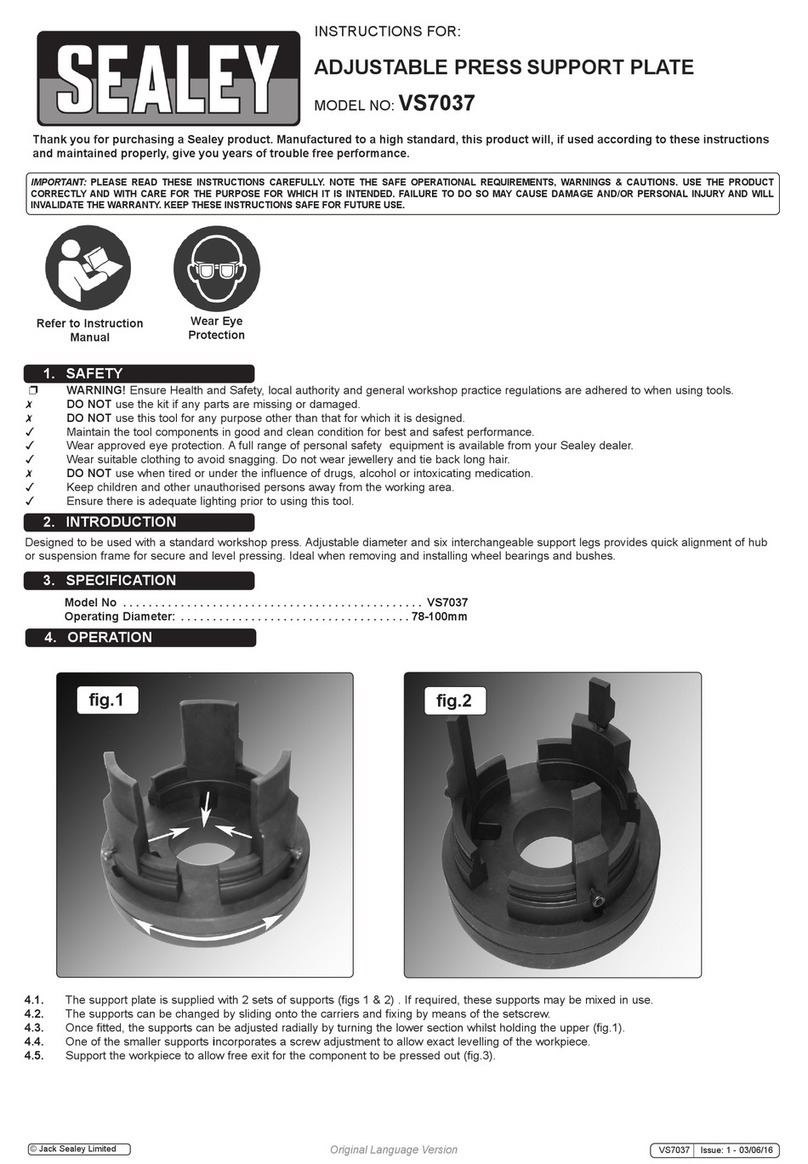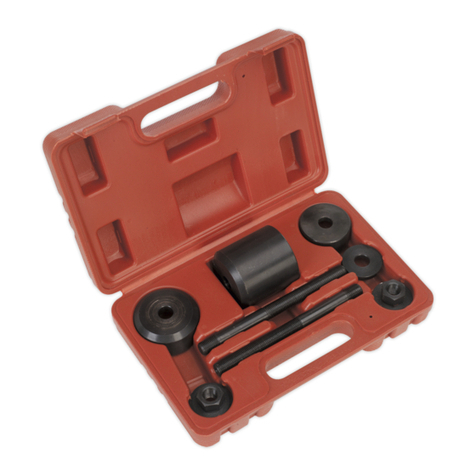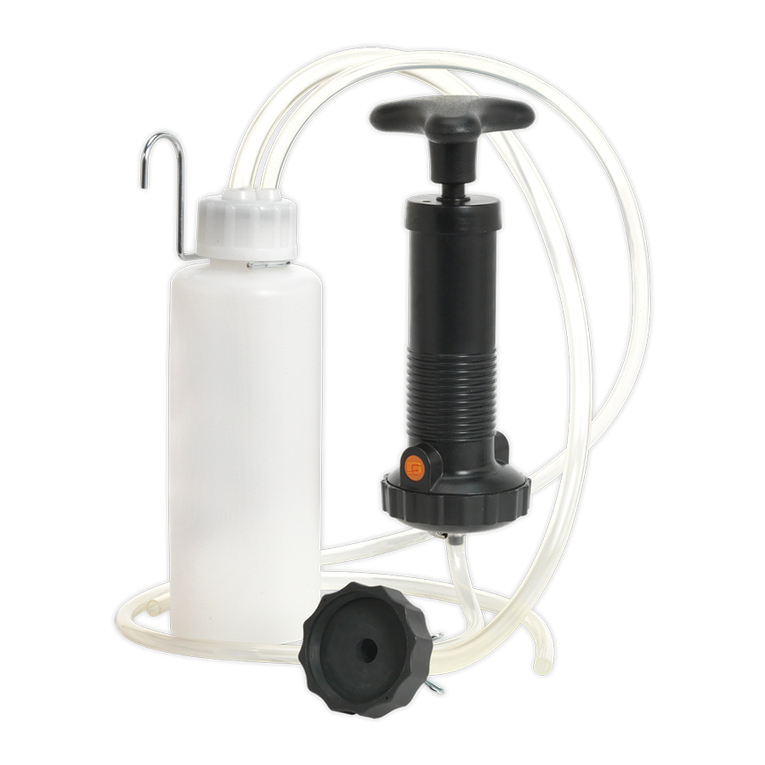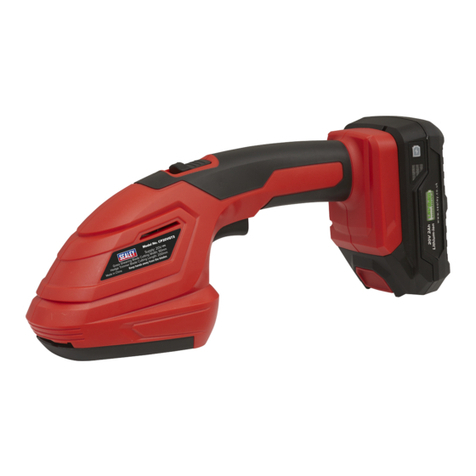
Original Language Version
© Jack Sealey Limited
4. OPERATION
4.1. Always consult the vehicle manufacturer’s handbook or workshop manual for the recommended procedure.
4.2. Screw the cap onto the brake/clutch
reservoir. Make sure that the cap is tight
and connect the remaining pipes, g.1.
4.3. Pump the handle to pressurise, make sure
there are no leaks, g.2.
4.4. Release the pressure and ll the bottle with new brake uid, g.3.
4.5. Mount the bottle in a suitable position under
the bonnet using the metal hook, g.4.
4.6. Using a suitable pipe and waste container
(not supplied), push the pipe onto the bleed nipple. Pump the handle to pressurise the bottle, g.5.
4.7. Release bleed nipple allowing air and old brake uid to ow out of container, g.6.
4.8. When the bottle and reservoir is pressurised, follow the vehicle manufacturer’s instructions for brake or clutch bleeding.
4.9. Monitor the uid level in the bottle; if it needs replenishment before the bleeding procedure is complete, open the bottle cap slowly to
release the pressure. Rell the bottle and re-pressurise.
4.10. When the bleeding has been completed, release the bottle pressure by unscrewing the cap slowly.
4.11. Wipe the bottle cap with clean rag or paper to avoid dripping brake uid on paintwork.
4.12. When not in use, empty of brake uid and store in a clean, dry, childproof location.
4.13. Dispose of brake uid in accordance with national and local regulations.
.
VS1205 Issue: 2 (2) - 19/09/18
fig.1
fig.2fig.3
fig.4
fig.5
fig.6
Sealey Group, Kempson Way, Suffolk Business Park, Bury St Edmunds, Suffolk. IP32 7AR
01284 757500 01284 703534 sales@sealey.co.uk www.sealey.co.uk
Note: It is our policy to continually improve products and as such we reserve the right to alter data, specifications and component parts without prior
notice.
Important: No Liability is accepted for incorrect use of this product.
Warranty: Guarantee is 12 months from purchase date, proof of which is required for any claim.
ENVIRONMENT PROTECTION
Recycle unwanted materials instead of disposing of them as waste. All tools, accessories and packaging should be sorted, taken to
a recycling centre and disposed of in a manner which is compatible with the environment. When the product becomes completely
unserviceable and requires disposal, drain any fluids (if applicable) into approved containers and dispose of the product and fluids
according to local regulations.
Parts support is available for this product. Please email sales@sealey.co.uk or telephone 01284 757500
